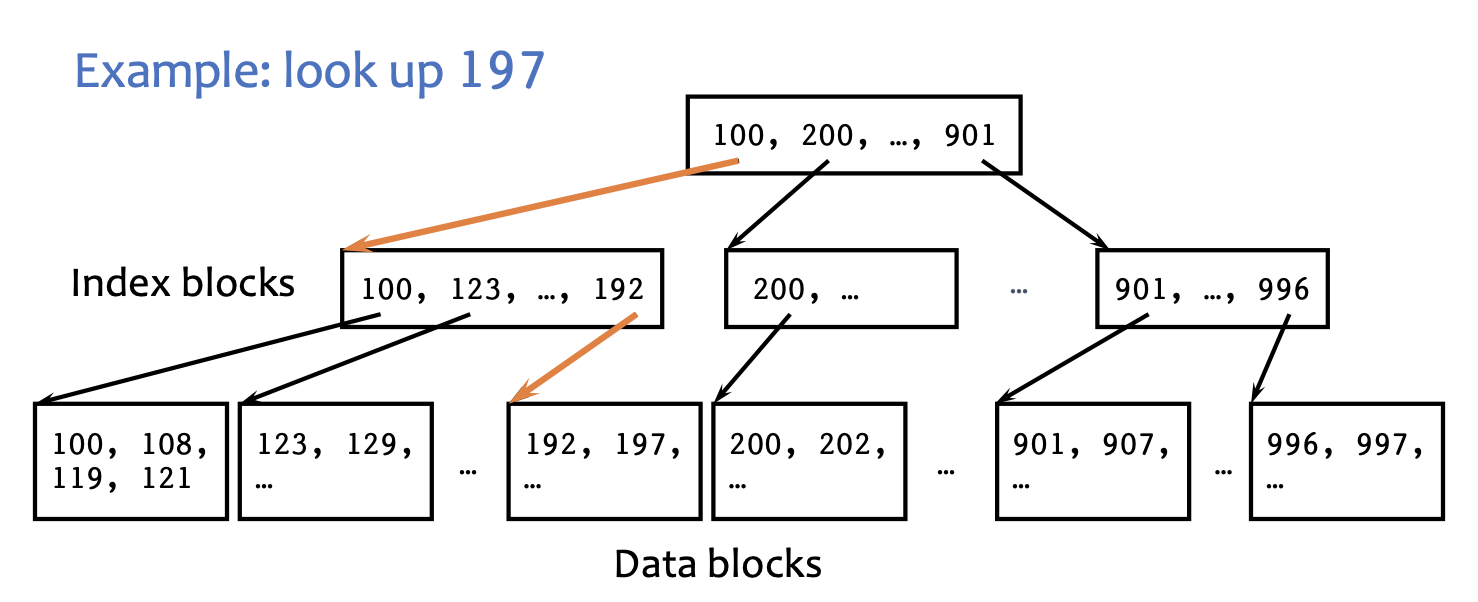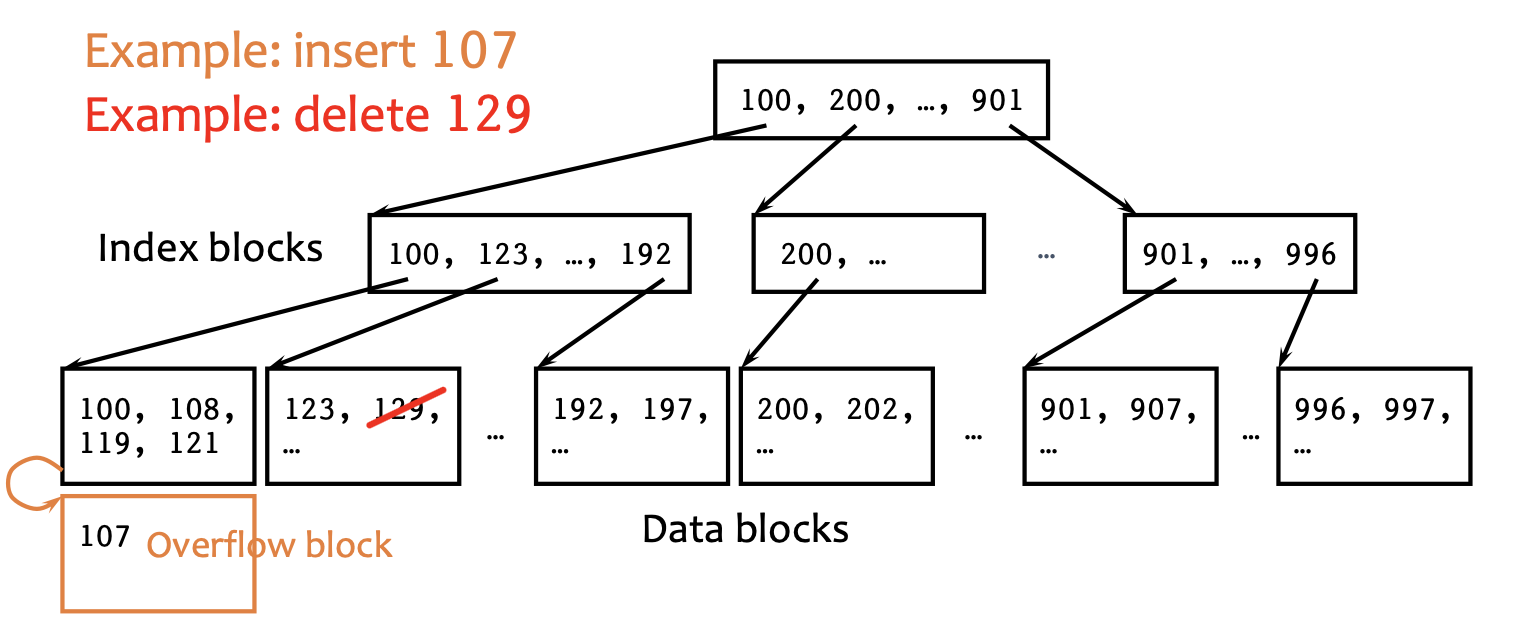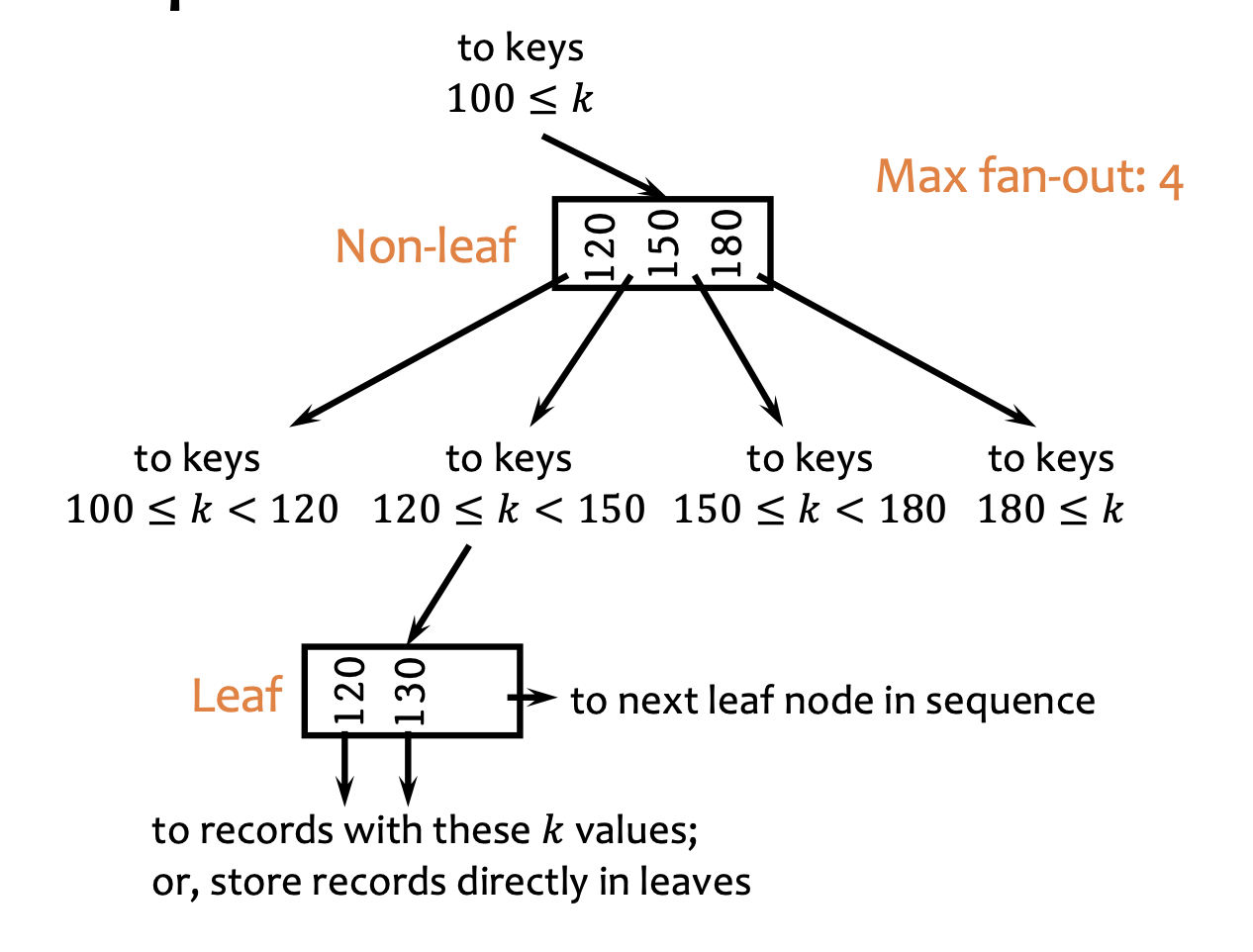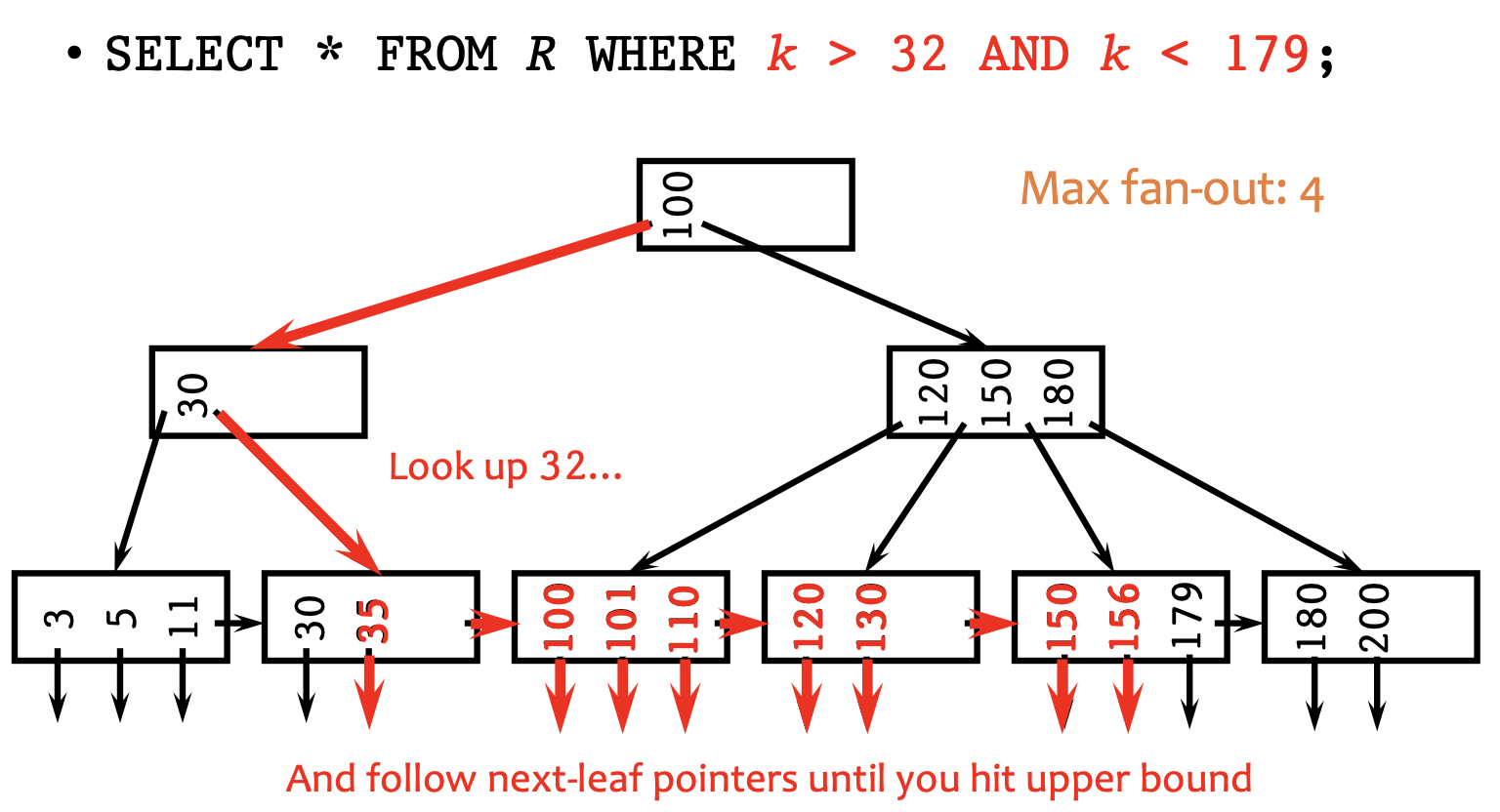Every trip to the disk is a trip to pluto.
Sequential Index
- Can be dense or sparse
- Primary Index: Key indices are often sparse, because the rows are ordered using the key index
- Secondary Index: Index on other attributes are often dense b/c/ v.v.
- You can manually create indexes in SQL:
{postgresql}CREATE INDEX indexname ON tablename(columnname) - Multi-column index: Index on has keys that have concatenated and sorted together.
- See: sql server - what does a B-tree index on more than 1 column look like? - Stack Overflow
- Quote: “With most implementations, the key is simply a longer key that includes all of the key values, with a separator. No magic there;-). In your example the key values could look something like:
"123499|John Doe|Conway, NH","32144|Bill Gates| Seattle, WA"
Index Sequential Access Method (ISAM)
- Lookup:

- Insert / Delete:

B+ Trees
- Architectural Improvement on ISAM
- Each block can fan-out a specific amount
- Each block containes entries to indicate ranges
- Example:

- Leaves are sequential → Range queries are possible:

- Guaranteed to be well-balanced (=all nodes are at least half-full)
- Guaranteed by recursive node splitting (on insert) and recursive node coalescing or entry stealing (on delete)
- Example:

- Performance: access time is
- → You can fit this in memory (4-level B+ Trees are often good enough)
- …recall you also need to node-split of node-coalesce sometimes too